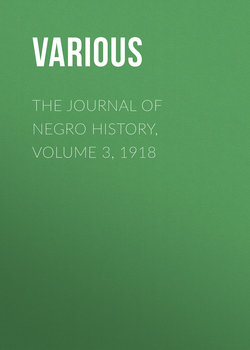Читать книгу The Journal of Negro History, Volume 3, 1918 - Various - Страница 16
The Journal of Negro History
Vol. III—January, 1918—No. 1
SOME UNDISTINGUISHED NEGROES
ОглавлениеA little slave boy was intrusted with a card which he was to bear to a person to whom it was directed and so charmed was he with the beautiful inscription drawn upon it that he was seized with an unconquerable desire to learn the mystery it contained. To this end he persuaded a little boy of his master's to teach him the letters of the alphabet. He was discovered in the act and whipped. His curiosity, however, to learn the secret, which was locked up in those mysterious characters, was only increased, and he was detected in another attempt, and accordingly chastised. By this time he had so far penetrated the secret that nothing could deter him from further effort. A third time he was detected, and whipped almost to death. Still he persevered; and then to keep the matter secret, if possible, he crept into a hogshead, which lay in a rather retired place and leaving just hole enough to let in a little light, he sat there on a little straw, and thus prosecuted his object. He knew he must be whipped for being absent; and he often had to lie to conceal the cause; but such were the strivings of his noble nature, such his irrepressible longings after the hidden treasures of knowledge, that nothing could subdue them, and he accomplished his purpose.140
Edward Mitchell, a colored man, was brought from the South by President Brown of Dartmouth College. He soon indicated a desire for mental culture on being brought within its influence at college. At first there was some hesitation about admitting him as the children of southerners sometimes attended Dartmouth and one of them had recently instructed his son to withdraw should the institution admit a Negro to his classes. Mitchell was prepared for entering the Freshman class, was received as a regular student and was promoted through all other classes to a full honorable graduation. He was uniformly treated with respect by his fellow students throughout his collegiate career. Upon graduating in 1828 he was settled as a pastor of a Baptist church in the State of Vermont, where he rendered creditable service.141
Luke Mulber came to Steubenville, Ohio, in 1802, hired himself to a carpenter during the summer at ten dollars a month, and went to school in the winter. This course he pursued for three years, at the expiration of which he had learned to do rough carpenter work. Industry and economy crowned his labors with success. In 1837 he was a contractor hiring four or five journeymen, two of whom were his sons, having calls for more work than they could do. He lived in a fine brick house which he had built for himself on Fourth Street, valued at two thousand five hundred dollars and owned other property in the city. Persons who came into contact with Mulber found him a quiet, humble, Christian man, possessing those characteristics expected of a useful member of society.142
Samuel Martin, a man of color, and the oldest resident of Port Gibson, Mississippi, emancipated six of his slaves in 1844, bringing them to Cincinnati where he believed they would have a better opportunity to start life anew. These were two mulatto women with their four quadroon children, the color of whom well illustrated the moral condition of that State, in that each child had a different father and they retained few marks of their partial African descent. Mr. Martin was himself a slave until 1829. He purchased his freedom for a large sum most of which he earned by taking time from sleep for work. Thereafter he acquired considerable property. He was not a slaveholder in the southern sense of that word. His purpose was to purchase his fellowmen in bondage that he might give them an opportunity to become free.143
140
The Philanthropist, July 28, 1837.
141
Ibid.
142
The Philanthropist, June 2, 1837.
143
Cincinnati Morning Herald, June 1, 1844.
